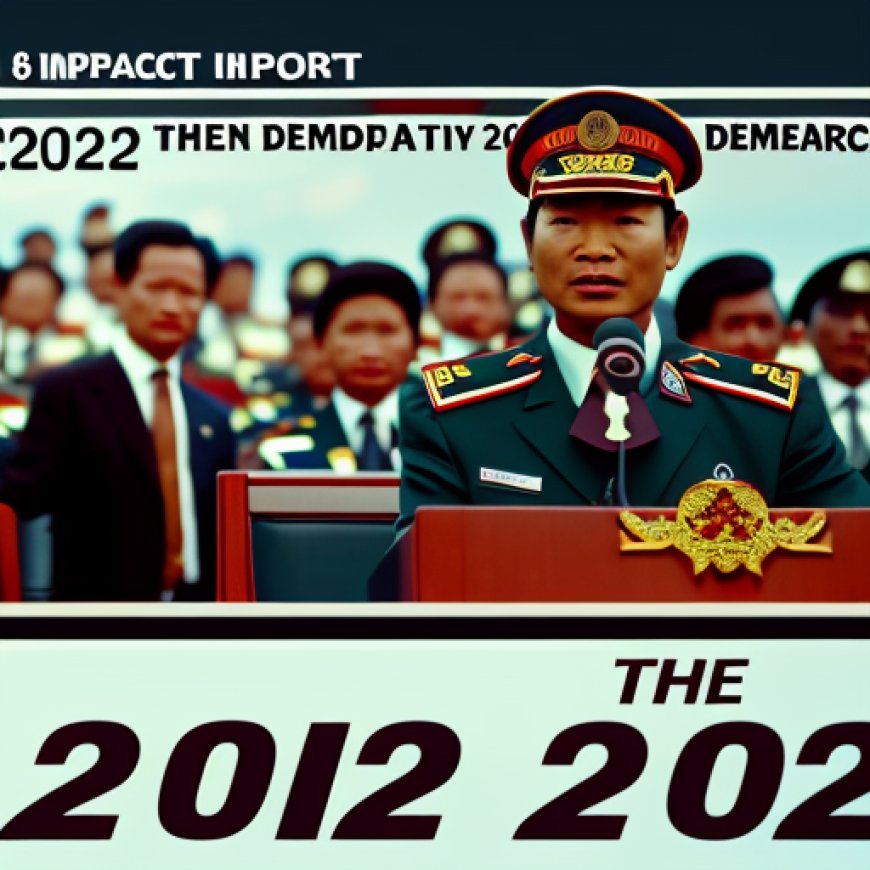Lao PDR Impact Report 2022 – Lao People’s Democratic Republic (the)
Lao PDR Impact Report 2022 - Lao People's Democratic Republic ... ReliefWeb


Overview of Lao PDR priority sectors
Child Protection
- World Vision recognises that vulnerability of children is very high in Lao PDR.
- A report released by UNICEF in 2018, Measuring Progress on Child Wellbeing in Lao PDR, reported that approximately 70% of children aged below 18 in Lao PDR experience at least two forms of deprivation.
- Consequences for lifelong productive and social participation.
- 50% of children are suffering from three or more deprivations at the same time.
- Only 12% of children experience no deprivation at all.
- 25% of Lao mothers/caregivers of children aged 1-14 believe that physical punishment is necessary.
- A high prevalence of child marriage is observed with one in three women aged 20-49 married before they reach the age of 18, with 7% married before the age of 15.
Nutrition & Health
- High needs are observed in maternal and child health.
- High rates of malnutrition observed in children under 5 years (Stunting 33%, Wasting 9% and underweight 21%).
- Maternal Mortality ratio of 185.0.
- Adolescent Birth Rate of 65.4 – all the highest prevalence in the East Asia region.
Education
- The mean years of school is 5.3 years.
- Low spending in education is reflected in low education quality and learning.
- While the average student spends over 10.8 years in school, he/she learns the equivalent of only 6.4 years during that period.
- Student comprehensive learning outcomes are concerning with on average, only one in three Grade 3 students meeting literacy standards.
- Nearly 40% of children under the age of 5 – a crucial period for neural development – have no access to early learning opportunities.
Food Security & Livelihood
- Agriculture is the main source of livelihood in Laos.
- Food security remains challenging, especially for districts affected by unexploded ordnance (UXOs).
- More than 2 million tons of UXOs were dropped between 1964 and 1973, with 30% failing to detonate.
- The impact of these on poverty is clear, with 42 of the 46 poorest districts affected by UXOs.
Climate Change
- Laos is vulnerable to climate changes.
- In recent years, the frequency and intensity of extreme weather events has increased with damaging floods along the Mekong River.
- In 2020, Laos rated 9.1/10 with physical exposure to floods and 6/10 in the lack of coping capacity dimension.
Social Inclusion
- Laos’ extreme diversity in ethnicity and geography is another challenge to development.
- The vulnerability of children increases when living in inaccessible areas (with no road access year-round).
- This impacts health services and education coverages.
- Poor infrastructure and government services in remote and mountainous areas continue to place ethnically diverse communities at a disadvantage.
SDGs, Targets, and Indicators
-
SDG 1: No Poverty
- Target 1.2: By 2030, reduce at least by half the proportion of men, women, and children of all ages living in poverty in all its dimensions according to national definitions.
- Indicator: Proportion of population living below the national poverty line.
-
SDG 2: Zero Hunger
- Target 2.1: By 2030, end hunger and ensure access by all people, in particular the poor and people in vulnerable situations, including infants, to safe, nutritious and sufficient food all year round.
- Indicator: Prevalence of undernourishment.
-
SDG 3: Good Health and Well-being
- Target 3.2: By 2030, end preventable deaths of newborns and children under 5 years of age, with all countries aiming to reduce neonatal mortality to at least as low as 12 per 1,000 live births and under-5 mortality to at least as low as 25 per 1,000 live births.
- Indicator: Under-5 mortality rate.
-
SDG 4: Quality Education
- Target 4.1: By 2030, ensure that all girls and boys complete free, equitable and quality primary and secondary education leading to relevant and effective learning outcomes.
- Indicator: Proportion of children and young people achieving a minimum proficiency level in reading and mathematics.
-
SDG 5: Gender Equality
- Target 5.3: Eliminate all harmful practices, such as child, early and forced marriage and female genital mutilation.
- Indicator: Proportion of women aged 20-24 years who were married or in a union before age 18.
-
SDG 6: Clean Water and Sanitation
- Target 6.1: By 2030, achieve universal and equitable access to safe and affordable drinking water for all.
- Indicator: Proportion of population using safely managed drinking water services.
-
SDG 10: Reduced Inequalities
- Target 10.2: By 2030, empower and promote the social, economic and political inclusion of all, irrespective of age, sex, disability, race, ethnicity, origin, religion or economic or other status.
- Indicator: Proportion of people living below 50 percent of median income.
-
SDG 13: Climate Action
- Target 13.1: Strengthen resilience and adaptive capacity to climate-related hazards and natural disasters in all countries.
- Indicator: Number of deaths, missing persons, and directly affected persons attributed to disasters per 100,000 population.
Behold! This splendid article springs forth from the wellspring of knowledge, shaped by a wondrous proprietary AI technology that delved into a vast ocean of data, illuminating the path towards the Sustainable Development Goals. Remember that all rights are reserved by SDG Investors LLC, empowering us to champion progress together.
Source: reliefweb.int

Join us, as fellow seekers of change, on a transformative journey at https://sdgtalks.ai/welcome, where you can become a member and actively contribute to shaping a brighter future.







